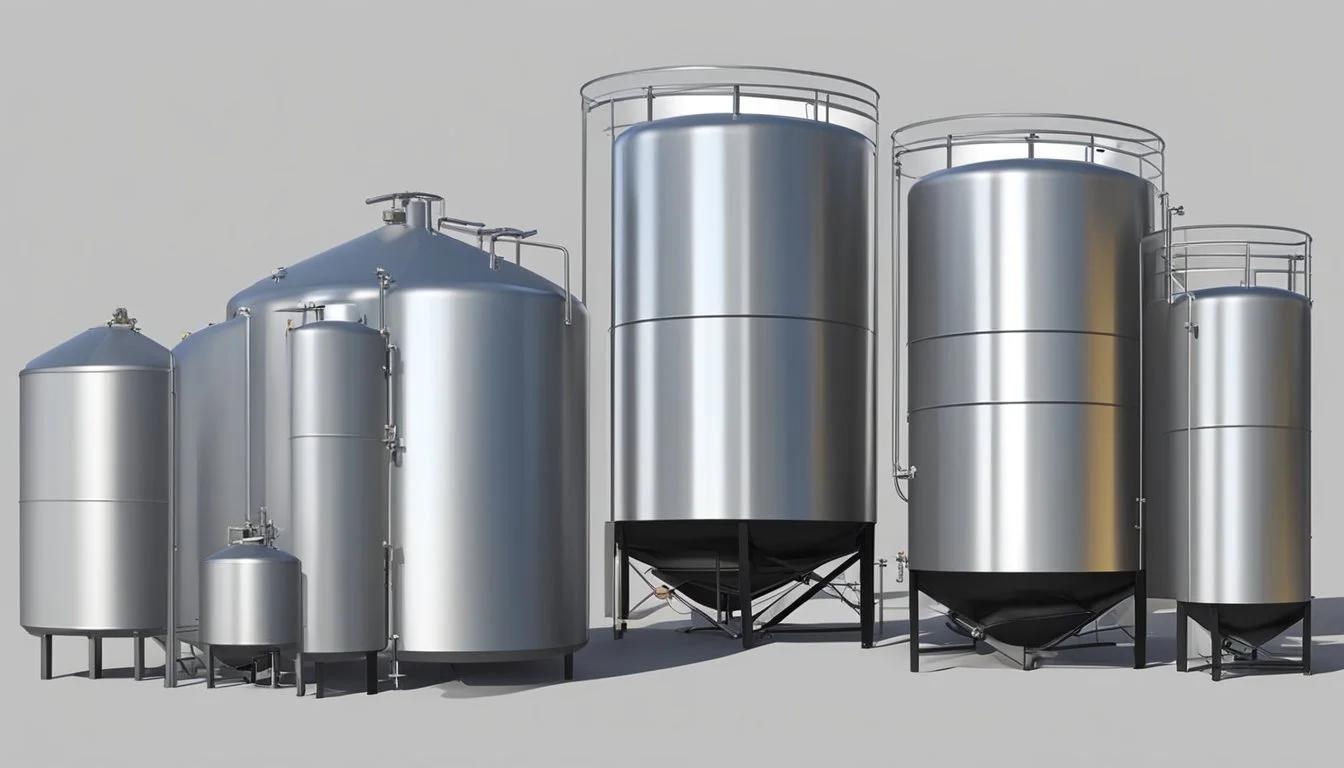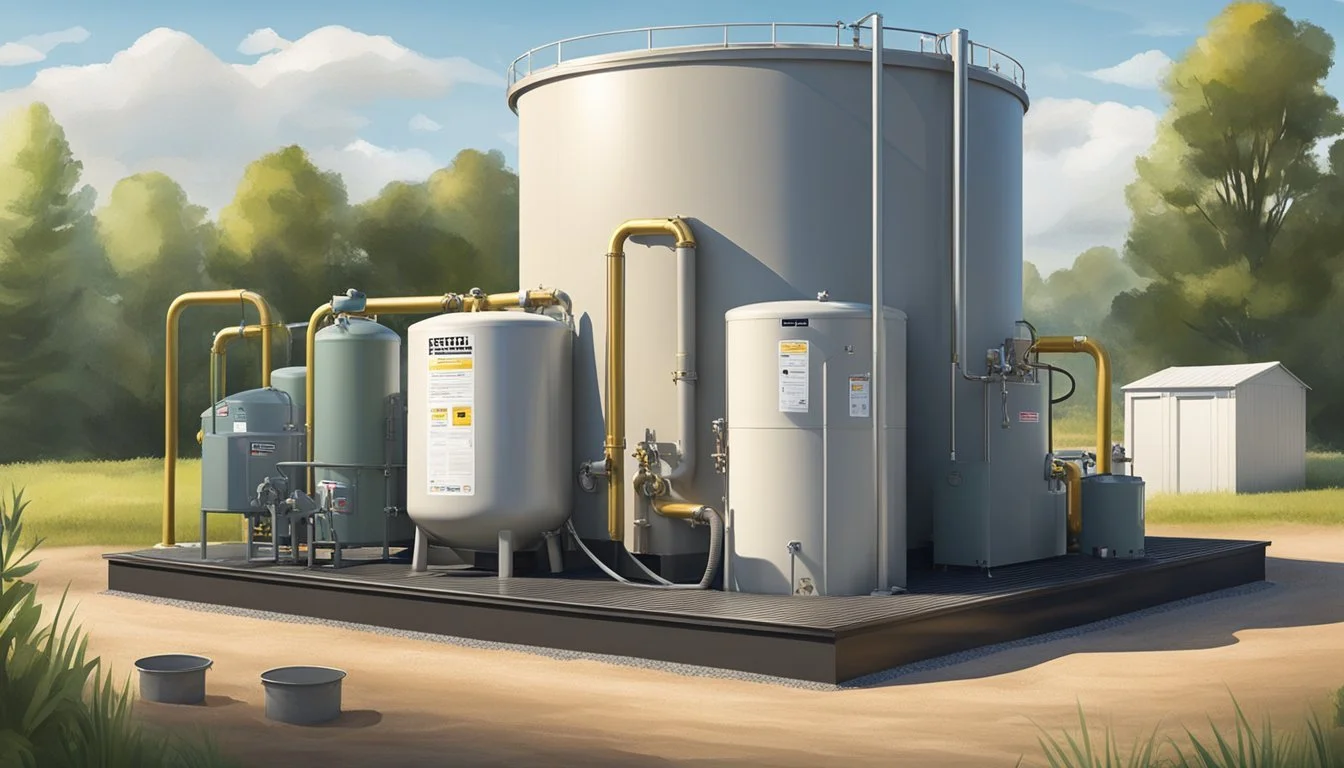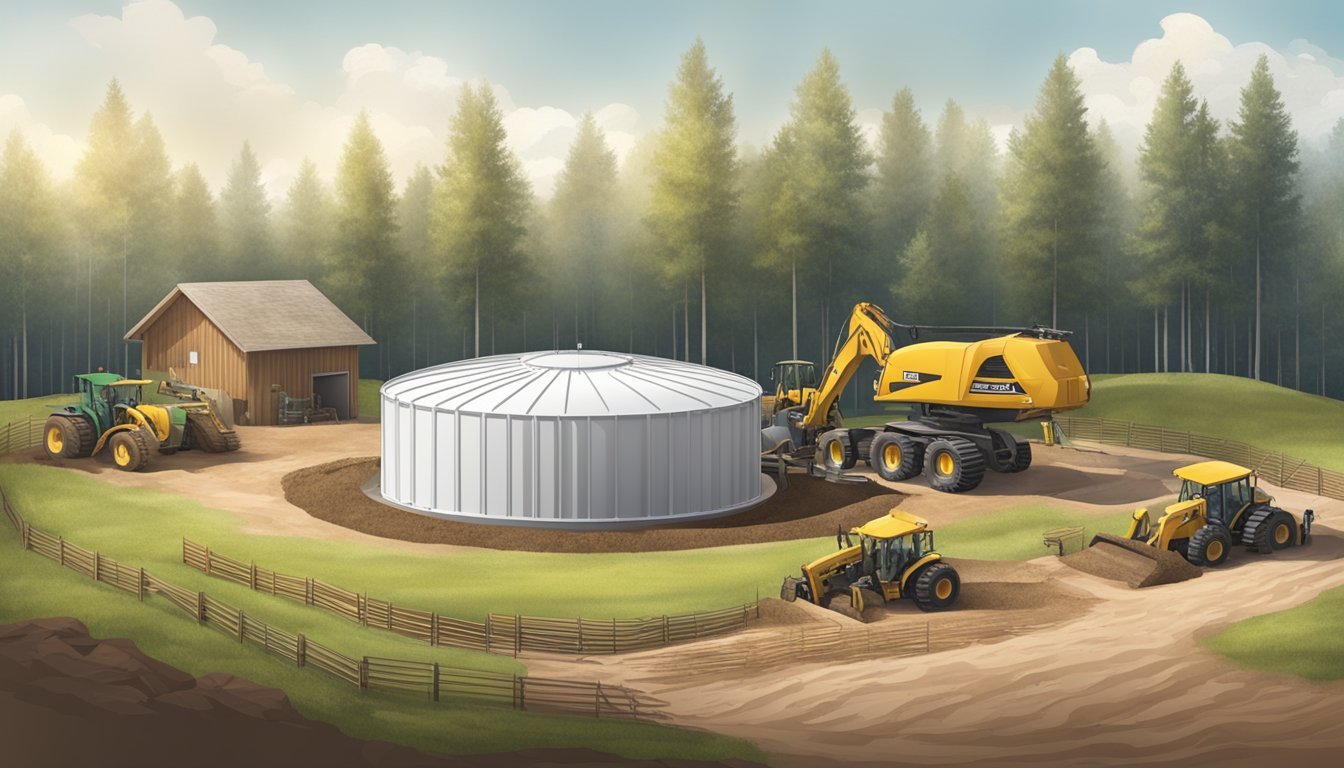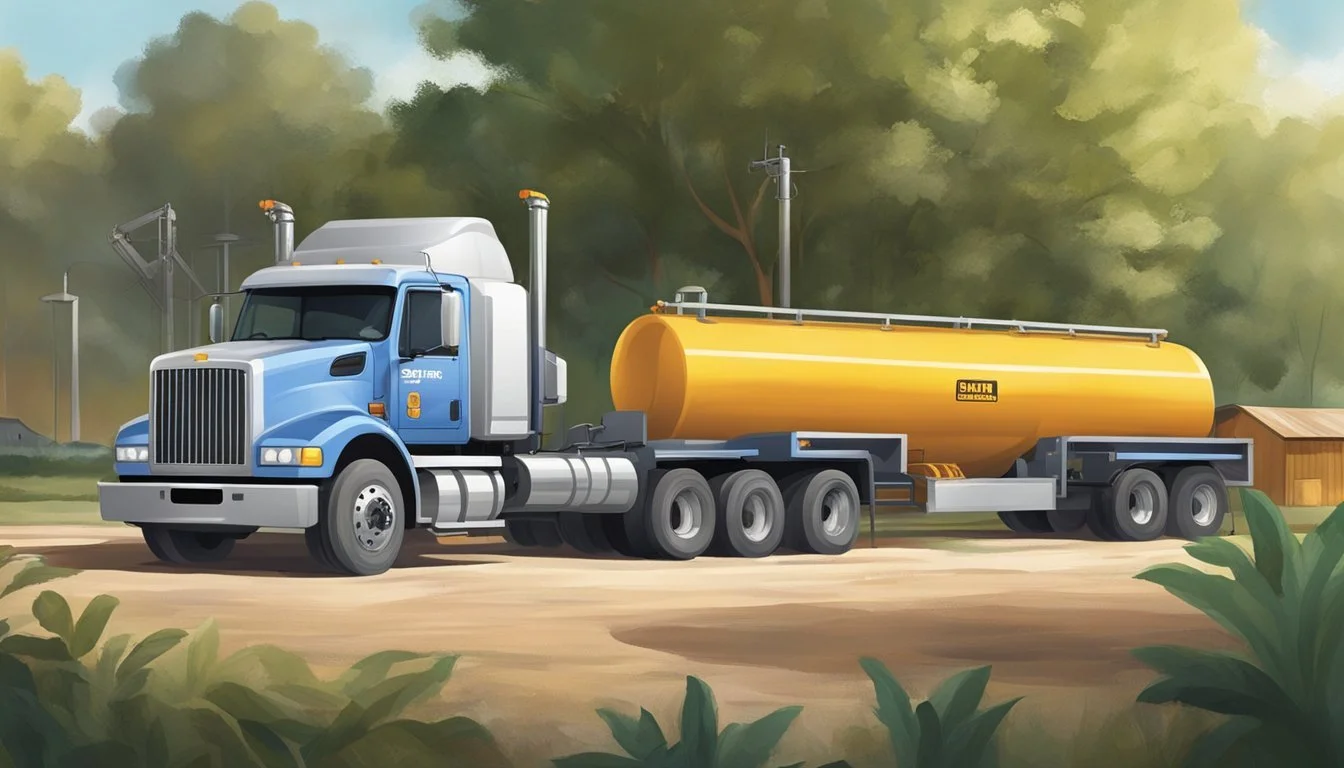The Ultimate Guide to Diesel Fuel Storage Tanks
Ensuring Efficient On-Site Fuel Supply for Homesteading
Diesel fuel storage is a significant consideration for homesteaders who rely on machinery and generators to maintain their self-sufficient lifestyles. Efficient and safe diesel storage tanks are vital for energy security and operational continuity, allowing for a steady supply of fuel to power essential equipment. With the right storage solutions, homesteaders can ensure their fuel reserves remain uncontaminated, readily accessible, and in compliance with environmental regulations.
On-site fuel storage offers homesteaders the convenience of refueling equipment without the need for frequent trips to off-site fuel stations. By investing in diesel storage tanks, they gain control over their fuel supply, mitigating potential fuel shortages and price volatility. The proper storage system also protects the fuel from external elements and reduces waste due to spills or evaporation.
When selecting a diesel storage tank, homesteaders must consider factors such as capacity, material, design standards, and appropriate safety features. The tanks should adhere to industry standards – such as those set forth by the American Petroleum Institute – to ensure safe and effective fuel storage. Additionally, routine maintenance and inspection are crucial to prolong the lifespan of diesel storage tanks and prevent environmental contamination.
Types of Diesel Storage Tanks
Selecting the appropriate diesel storage tank is crucial for ensuring safety, compliance with regulations, and the integrity of the fuel supply. Various materials and designs are available, each suited to different needs and environments.
Above-Ground Tanks
Above-ground tanks are a common choice for on-site diesel fuel storage, offering ease of access and inspection. They typically come in materials such as steel, fiberglass, or coated with materials to prevent corrosion. One of the primary advantages of above-ground tanks is the simplification of leak detection and maintenance. These tanks can be single-walled or double-walled for additional protection against spills, often complemented with a containment basin.
Portable Tanks
Portable tanks provide a convenient option for transporting diesel fuel around the homestead or to remote locations. They are generally made from robust materials like steel and are designed to be moved when full. In terms of capacity, they can range from small containers suitable for light machinery to larger tanks equipped with pumps and handles for easy dispensing.
Underground Tanks
Underground tanks offer a discreet storage option, minimizing space usage and preserving the aesthetics of the homestead environment. Made from materials such as fiberglass, steel, or concrete, underground tanks are designed to withstand soil pressure and external corrosive elements. The installation of underground tanks must meet rigorous standards for preventing leaks and protecting groundwater, often requiring specialized coatings or a secondary containment system.
Design and Capacity Considerations
When planning for on-site diesel fuel storage, homesteaders must thoughtfully consider both the design of the tank and the capacity needed to ensure a consistent and safe fuel supply. These considerations directly impact the efficiency and reliability of fuel storage systems.
Tank Design Features
To ensure a safe and functional on-site diesel fuel supply, the fuel tank must incorporate specific design features. Mandatory features include durable construction materials like coated steel or fiberglass to guard against corrosion and leakage. The incorporation of secondary containment systems can mitigate environmental risks in the event of a spill. An east-west orientation may benefit some designs by minimizing the direct impact of the sun, thereby reducing temperature-related expansion and contraction which could stress the tank structure.
Materials: Steel (coated), Fiberglass
Containment: Dual-layered with leak detection
Orientation: East-West to minimize sun exposure
Capacity Requirements
Capacity is vital to ensure a homestead's energy needs are met without constant resupply. To determine the fuel tank capacity, homesteaders should calculate their average fuel usage and consider future expansion possibilities which may increase energy requirements. For designing bulk fuel tanks, the American Petroleum Institute's (API) standards can ensure proper safety and construction protocols. Selection typically ranges from a few hundred gallons for small-scale needs to thousands of gallons for extended supply.
Average Usage Assessment: Daily, Monthly, Seasonal
Future Proofing: Allowing for consumption growth
Standard Compliance: Adhering to API guidelines
The integration of these design and capacity features into a homesteader's fuel storage planning will result in a robust and reliable on-site fuel supply system.
Regulations and Compliance
Regulatory compliance for diesel fuel storage is essential to ensure safety and environmental protection. The homesteader's on-site fuel supply must adhere to strict standards governed by national and local legislation, and industry best practices.
National and Local Laws
The foundation for diesel fuel storage compliance is shaped by federal, state, and local regulations. At the national level, regulations such as those from the Environmental Protection Agency (EPA) provide guidelines to prevent spills and leaks. The Clean Water Act significantly informs these regulations, particularly for spill prevention, control, and countermeasure plans. Homesteaders must also stay informed of state-specific laws and municipal bylaws, which can impose additional requirements.
Key Entities: EPA, state environmental departments
Fuel Storage Regulations
The design and operation of diesel fuel storage tanks must comply with The American Petroleum Institute (API) standards, and tanks should be Underwriters Laboratories (UL) listed to ensure quality and safety. Storage tanks exceeding a certain size, generally 55 gallons, fall under the category of bulk storage and require compliance with SPCC (Spill Prevention, Control, and Countermeasure) regulations. Additionally, tanks should be routinely inspected to maintain their integrity and prevent environmental contamination.
Key Regulations and Standards:
API standards
UL listings
Spill Prevention, Control, and Countermeasure plan (SPCC)
Environmental Considerations
Environmental compliance involves measures to protect soil and groundwater from contamination. The National Fire Protection Association (NFPA) provides guidelines concerning the safe storage of flammable and combustible liquids, like diesel. Homesteaders must ensure that secondary containment systems are in place to contain spills, and proper hazardous waste management practices are followed, especially when decommissioning old tanks or cleaning up spills.
Environmental Protections:
Secondary containment systems
Routine inspections and maintenance
Adherence to NFPA guidelines for storage safety
By maintaining awareness of and compliance with these regulations and best practices, homesteaders can ensure that their diesel fuel storage tanks meet all safety and environmental standards.
Installation and Site Preparation
The process of setting up diesel fuel storage tanks involves meticulous preparation and adherence to safety standards. Ensuring a correct installation prevents contamination and secures a reliable on-site fuel supply for homesteaders.
Selecting a Site
When choosing a location for a diesel fuel storage tank, prioritize areas away from combustible materials and traffic. The chosen site must comply with local codes, typically requiring a safe distance from buildings and property lines. The vicinity should be clear of flammable liquids and weeds to reduce the risk of fire hazards. Proximity to water tributaries should be avoided to prevent potential contamination.
Preparing the Site
The preparation of the site is crucial, with an emphasis on establishing a stable and level base that can support the weight of the full tank. The construction of secondary containment systems is mandatory to contain spills or leaks. This containment must have the capacity to hold 110% of the largest tank within the dyked area or 10% of the total volume of all tanks, whichever is greater. Vegetation like weeds must be cleared, and the ground should be compacted to ensure stability.
Installing the Tank
Installation involves placing the tank on a firm foundation which may require concrete pads or tank saddles to maintain stability and structural integrity. Secure the tank to prevent movement in case of inclement weather or accidental impact. All fittings and connections must be checked for leaks. It is imperative that installation adheres to both manufacturer specifications and local regulations governing fuel storage and flammable liquids.
Fuel Management Systems
Effective fuel management systems are critical for optimizing the efficiency, security, and inventory tracking of on-site diesel fuel supply. They utilize advanced monitoring technology, ensure precise inventory control, and incorporate measures to deter theft, thus safeguarding a homesteader's fuel reserves.
Monitoring Technology
Modern fuel management systems employ technology to monitor fuel levels, consumption rates, and potential leaks. Monitoring devices are often connected to alarms that alert the user to changes in fuel volume, potential theft, or environmental spills. Many systems are designed to provide real-time data accessible from remote locations, allowing homesteaders to maintain a vigilant watch over their fuel supplies. Fuel cubes represent a common solution, incorporating built-in monitoring equipment to offer compact and easily manageable fuel storage options.
Inventory Control
Inventory control is crucial for efficient fuel management. Systems typically include software that can track fuel dispense and provide accurate usage reports. This helps homesteaders maintain optimal fuel levels at all times, reducing the risk of unexpected shortages that could disrupt their operations. It can:
Maintain real-time fuel inventory levels
Log fuel dispensing activities
Forecast future fuel needs based on historical data
Theft Deterrence
Fuel theft is a significant concern for any fuel storage operation. Fuel management systems often have heightened security features such as lockable access points, reinforced structures, and surveillance compatibility. Moreover, systems can link to alarms that trigger in the event of unauthorized access, thereby deterring potential thieves. For homesteaders relying on diesel for their power supply, ensuring the security of their fuel reserves is paramount; thus, theft deterrence features are essential components of an on-site fuel storage system.
Safety and Spill Prevention
In managing diesel fuel storage on a homestead, prioritizing safety and spill prevention is crucial. These measures protect both the environment and those handling the daily tasks associated with fuel supply.
Secondary Containment Features
Secondary containment systems are integral for any diesel fuel storage facility to prevent environmental contamination in the event of a spill. Double-walled tanks provide a robust solution, as they incorporate an outer tank that serves as a secondary barrier should the inner tank fail. According to regulations, the capacity of secondary containment must be adequate to hold a certain percentage of the contents of the primary container or the full volume of the largest container, whichever is greater.
Spill Prevention Plans
Every diesel fuel storage operation must have a comprehensive Spill Prevention, Control, and Countermeasure (SPCC) plan. This outlines the procedures for managing spills and includes the installation of spill containment equipment, such as drip trays or basins. It's essential that all nozzles and transfer hoses are equipped with automatic shut-off mechanisms to minimize the risk of spillage.
Fire Safety and Extinguishers
Due to the flammable nature of diesel, homesteads must adopt stringent fire safety practices around fuel storage areas. It's necessary to have fire extinguishers readily available and to establish clear protocols for their use. All storage tanks must be positioned away from potential ignition sources, and personnel should be trained in operational safety tips to prevent fire incidents. Regular inspections of tanks and associated machinery for leaks or damages are also vital components of maintaining fire safety at a fuel storage site.
Maintenance and Inspections
Maintaining diesel fuel storage tanks is crucial to ensure fuel quality and extend the lifespan of the tanks. Regular inspections are necessary to detect and address issues such as corrosion, contamination, and water accumulation.
Routine Maintenance
Routine maintenance of diesel storage tanks includes several key activities to prevent problems before they escalate.
Regular Checks:
Visual Inspection: Examine for signs of wear, corrosion, and damage.
Seals and Gaskets: Check for deterioration or leaks.
Hoses and Pumps: Ensure they are in good working order and free of cracks.
Fuel Quality: Test for contamination that can include both particulate matter and water.
Preventative Measures:
Water Removal: Use water-absorbing filters or pumps to remove water that may have settled at the bottom of the tank.
Corrosion Inhibitor: Apply coatings and use additives to prevent rust and corrosion.
Biocides: Add to fuel periodically to prevent microbial contamination.
Tank Inspections
Inspections are a more formal process and should be conducted at least annually. They often involve both an internal and external examination of the tank.
External Inspection:
Examine the tank's exterior for structural integrity, paying close attention to welds and joints.
Check for appropriate labeling and ensure that all safety signs are visible and legible.
Internal Inspection:
Perform a detailed check inside the tank for sediment buildup, corrosion, or any signs of internal damage.
Inspect any internal coatings and linings for integrity.
Testing:
Fuel samples should be taken and tested for contaminants and quality deterioration.
Pressure testing may be done to check for leaks.
Cleaning Protocols
Cleaning is essential to maintaining fuel quality and tank longevity.
Steps for Cleaning:
Empty the Tank: Ensure all fuel is removed before cleaning.
Degassing: Allow any fumes to dissipate to reduce the risk of combustion.
Sludge Removal: Clear out any sediment or sludge that has accumulated at the tank's bottom.
High-Pressure Wash: Use a high-pressure washer to clean the interior surfaces.
Rinse and Dry: Rinse any cleaning agents used and properly dry the tank to prevent rust.
Post-Cleaning Inspection:
After cleaning, tanks should be re-inspected to ensure that the cleaning process has not caused any new issues.
Testing should also be repeated to ensure that no contaminants have been introduced during the cleaning process.
Fuel Delivery and Handling
Proper fuel delivery and handling are critical for maintaining the safety and efficiency of on-site diesel fuel storage. They ensure a steady supply of fuel for homesteading needs and prevent contamination and accidents.
Handling Fuels Safely
When handling diesel, safety is paramount due to the flammable nature of fuel. Personal protective equipment (PPE) such as gloves and eye protection should be worn at all times. Additionally, one should always ground fuel tanks during the transfer process to prevent static electricity from igniting the diesel. It is also crucial to have fire extinguishers and spill containment solutions readily available to address emergencies swiftly.
Avoid spills: Use a fuel nozzle with an automatic shut-off to minimize the risk of overfilling storage tanks.
Monitor for leaks: Regularly inspect tanks, hoses, and pumps for signs of wear, and repair or replace as necessary.
Fuel Delivery Processes
Fuel delivery processes must be organized and scheduled to ensure a continuous supply. Fleet fueling services or fuel tank rentals can provide regular deliveries directly to homesteading sites.
Scheduling: Consistent delivery schedules aligned with usage patterns avoid run-outs and emergency refueling situations.
Verification: Check the quantity and quality of diesel upon delivery to ensure that what is received matches the order.
Equipment and Hose Management
Managing equipment and hoses is vital to maintain the integrity of the on-site diesel supply.
Hose inspection: Frequent checks for any cracks or degradation in hoses can help prevent leaks and fuel contamination.
Pump maintenance: Regular servicing of pumps ensures efficient and safe fuel transfer, reducing the risk of breakdowns.
Storage and placement: Diesel pumps and hoses should be stored away from high-traffic areas to avoid damage and should be easily accessible for use and monitoring. Proper labeling and secure storage of all fuel-related equipment are non-negotiable for an organized fuel site.
Following these guidelines will help ensure that the fuel delivery and handling processes align with safety regulations and best practices for diesel storage and use for homesteading.
Industry-Specific Applications
Diesel storage tanks are tailored for various sectors where on-site fuel supply is a critical component that impacts operational efficiency.
Agriculture and Farming
In the agriculture industry, farmers utilize diesel storage tanks to fuel their tractors and other machinery. They save time and reduce downtime by having on-site fuel supply for planting, cultivating, and harvesting processes. Proper fuel storage is crucial for irrigation systems as well, where diesel-powered pumps are often relied upon.
Fuel Contents: Frequently contain red diesel due to its tax exempt status for agricultural use.
Savings: On-site diesel eliminates the need for frequent fuel deliveries.
Construction Sites
Construction sites often house large fleets of heavy machinery that depend on a constant supply of diesel. These sites benefit from having large, on-site tanks that save time and money, and enable construction fleets to operate without delay.
Storage Capacity: Varying from 200 to 1,000 gallons to match construction site needs.
Efficiency: On-site storage ensures heavy machinery such as excavators, bulldozers, and cranes have immediate refueling capability.
Emergency Services
Emergency services, such as hospitals and fire stations, must ensure a constant readiness state. They utilize diesel storage tanks to prevent any disruptions in the power supply that their critical operations might depend upon.
Reliability: 24/7 access to fuel is non-negotiable for services like ambulances and fire trucks.
Compliance: Fuel storage installations comply with stringent standards to ensure safety and fuel integrity.
Each industry incorporates diesel storage tanks as an imperative resource, emphasizing the necessity for resilience and autonomy in fuel supply.






